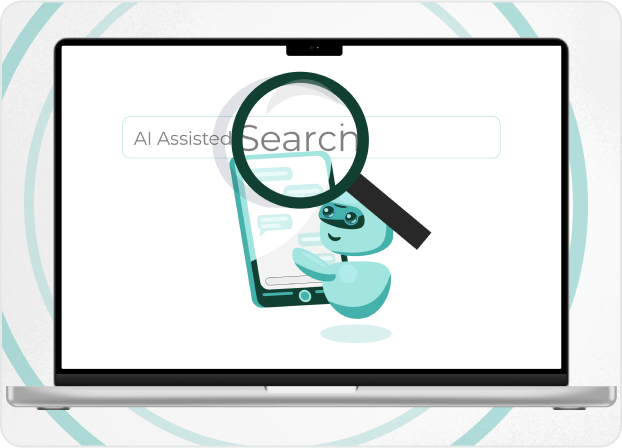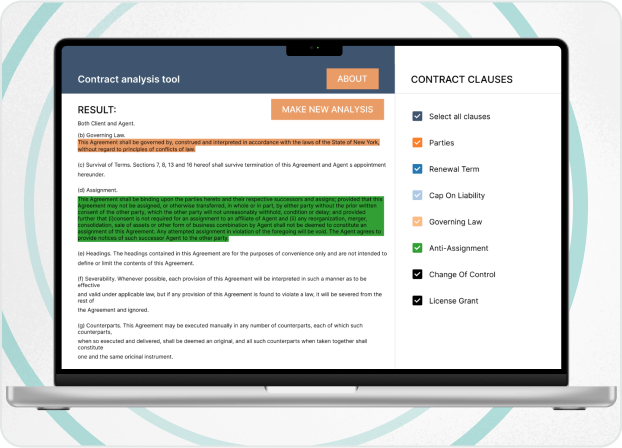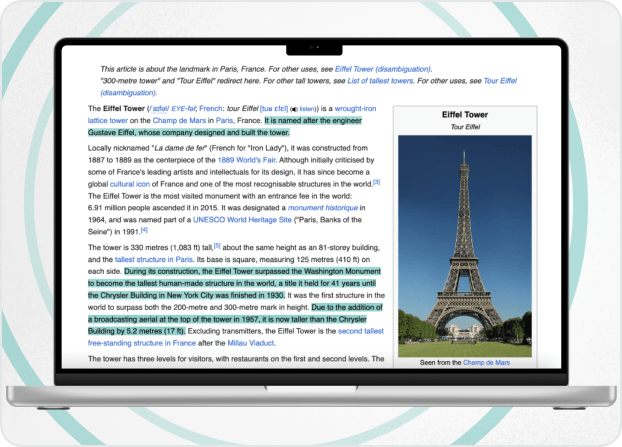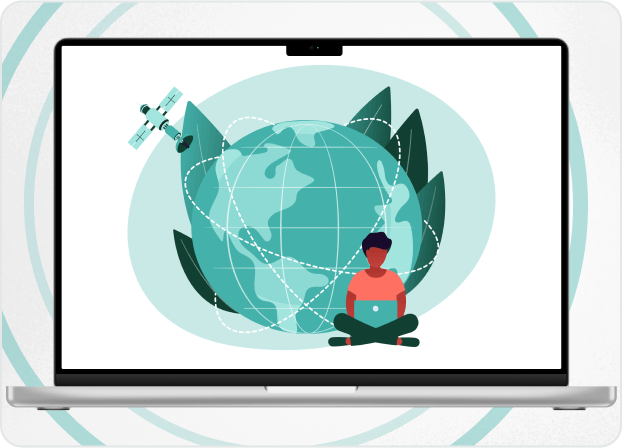
Expert’s Thoughts

"Retail is an industry that demonstrates one of the greatest needs for innovation and new technologies. From web and mobile products to AI development, the industry is demanding explicit retail management solutions that provide advanced supply and inventory management, process automation and cost reduction.
Silk Data prepared this blog post to explain retail management as a sphere of business and to show why companies need specialized software for it."
Yuri Svirid, PhD. — CEO Silk Data
Retail Management Solutions Industry Overview
According to the recent report made by Business Research Company, right now retail inventory management software market size has reached the number of 25 billion USD. The predictions in the same report indicate that in less than 5 years the amount will grow to 42 billion with an annual growth rate of 13%.

Source: https://www.thebusinessresearchcompany.com/report/retail-management-software-global-market-report
This data exceeds the predictions made by Global Market Insights in December 2024. However, both reports highlight the key factors that drive the market growth of the industry. These are:
- Expansion of e-commerce.
- Proliferation of mobile devices.
- Rising adoption of omnichannel retailing.
In essence, all of the factors indicate the unprecedented growth of the retail industry itself, as both online and offline purchasing flourish (though offline is slowly losing ground) and people still tend to consume more and more goods and services.
Through that, companies desperately look for digital solutions able to optimize workforce management, smart customer support and retail analytics.
What is a Retail Management and Why You Need It Digitalized?
Before getting to the topic of retail management software purpose, benefits and prominent examples, we’d have to work with retail management definition.
Retail management is a process of permanent overseeing and supervising retail operations, entities and resources.
There are lots of fields that lie in retail management responsibility, and the most vital of them are:
- Inventory control.
- Staff control and training.
- Pricing and retail strategy planning.
- Customer service supervising.
- Offline store organization.
All these operations can be done manually, but for the past years companies are getting to automation and digital innovations adoptions. Through that, we get to retail management system definition.
Retail management system is a digital program or software designed to automate the operations of traditional retail management.
Such systems typically integrate various tools for inventory control, sales and customer analytics, omnichannel management, employee supervision, onboarding, training and much more. Traditionally, RMSs are integrated into internal corporate ecosystems and may perform as the main workspace for various departments and specialists (as an equal contribution to CRM).
However, you should avoid the mistake of considering RMS as CRM-like software. In its wider definition, retail management system is also a digital product that provides convenient supervision over other retail digital solutions.
For example, automated checkout systems that relieve customers from the necessity of spending time in long queues are also part of digital retail management system, as well as analytics that investigates the efficiency of these systems.
Widely known delivery drones invented by Amazon and now adopted by many companies are also examples of how retail management systems work while tracking these drones is how RMSs work.
But why exactly do retail companies need all these innovations, aside from them looking high-tech and trendy. The reason is that they truly bring benefits for both retailers and their customers.
Let’s have a look at Walmart, one of the largest retail companies in the world with more than 11 000 operational stores worldwide and an annual revenue of 650 billion USD.
Since 2017 Walmart has been implementing various retail management digital solutions, most of them reinforced by AI. Here are only the most large-scale of them.

AI-based customer interaction
For years already both the company’s website and mobile app have been operating with the usage of AI chatbots. These chatbots take responsibility for the whole primitive customer interaction, like product information and order tracking responses.

Walmart Voice Order
The feature was developed in cooperation with Google in 2019. Customers were able to get access to groceries ordering via voice, simply by saying ‘Hey Google, talk to Walmart’. In addition, users get access to shops and goods with the best local price.

Predictive analytics for inventory optimization
The company’s RMS is capable of predicting incoming demand for particular goods. The feature uses ML algorithms analyzing historical data regarding purchasing trends, seasonality and sales rates. As a result, the ‘out-of-stock' and ‘overstock’ situations are minimized.

Machine-based supply chain management
Walmart uses AI-based robots in most of its warehouses for sorting and packing purposes, supporting human employees. In addition, AI systems support delivery specialists, planning the best routes from the point of time and cost reduction.
As a result, Walmart indicated that only in the field of inventory planning and management, efficiency increased by 20% thanks to various retail store management software and systems.
Key Benefits of Using a Retail Store Management System
There are lots of business benefits provided by digital retail management systems implementation. Instead of covering each of them (as some were already mentioned in the previous part), we divide them into three larger groups.

Better organisation
A term that can be referred to almost any side of retail.
Using retail store management software, you have the capability of getting better efficiency from orders and inventory management.
The digital system will make you always aware of what is available in stock (what types of goods, in what amounts, etc.) and how, where and when the products could be transferred from location A to location B.
Furthermore, better organization implies better performance and higher productivity for employees. If the supply and purchase processes are properly managed, the company’s specialists have a clear vision and see the range of their responsibilities for a particular time. Sales and supply managers always get the latest purchase and procurement requests; support specialists are notified of the most urgent downfalls, while drivers and delivery specialists have clear routes and all the necessary info on the destination point.
Finally, better organization through a retail management system, program or software means improved knowledge management within the retail store and the whole company.
All the vital information regarding products, customer policies and internal organization is stored within the retail management system.
Through that, customer support specialists can quickly and efficiently solve customer queries, while new employees spend less time for onboarding and demonstrate high self-learning and organization qualities (as they don't have to apply to their supervisors or more experienced co-workers).

Improved Planning
Here is the field where predictive analytics capabilities of some retail store management software solutions play a crucial role.
Sales histories, seasonal trends and market shifts that naturally occur with certain periods between them – all this historical data can be intelligently processed and analyzed. No matter how these processing and analysis go, manually or automatically with the usage of AI, the result becomes a firm basis for further decision-making.
Moreover, the benefit of improved planning is inevitably connected with the previous benefit of improved internal corporate organization. Better organization means quick, efficient, and convenient data gathering, so the processing, summarization and analysis can be performed at an increased speed and quality.
For the business, improved planning and decision-making via retail management system means the following:
- Minimized ‘out-of-stock' and overstocking situations, as the customer demand and market needs forecasts are performed with increased accuracy.
- Improved workforce management, as employees' working shifts are properly aligned with the peak purchasing and ordering hours.
- Optimized goods and services promotion, as it is based on data from real-time inventory and customer behavior analysis.

Costs Optimization and Resources Transition
Implementing a retail management system goes beyond simple streamlining of operations – it directly impacts a retailer’s spending through automation of costly processes and strategic reallocation of resources. Here’s how an RMS transforms financial efficiency.
- Labor optimization. Smart scheduling aligns staff shifts with foot traffic data, cutting overtime costs, so the number of consultants and sales managers always adequately responds to current needs. At the same time, self-checkout machines, being part of retail management systems, reduce cashier staffing consequently reducing employment costs.
- Automated inventory control. Implemented AI tools predict demand to prevent overordering, while real-time alerts for stockouts minimize lost sales.
- Shift from routine tasks to strategy. The automation provided by digital retail systems in general, and by AI-based tools in particular, relieves employees of monotonous manual operations. Specialists spend less time counting stock or fixing errors – now they have more time to work on better customer engagement.
Key Functions of Your Retail Store Management Software
Even a full understanding of the wide variety of benefits provided by retail management systems doesn’t ensure efficient implementation. Many companies still can’t figure out which software is the best, as well as they can’t decide which functions should be presented in the solution.
For example, they can look at Microsoft Dynamics 365 Business Central – a comprehensive cloud-based software designed for businesses (primarily, small- and medium-sized).
The solution from Microsoft provides lots of features regarding financial management, sales, customer service, supply chain and operations management.
At the same time, Shopify enables businesses of all sizes to build and manage their online stores. It is a cloud-based all-in-one platform that not only provides standard functionality of selling, inventory and marketing planning and management, but also offers customizable templates and tools for building retail websites and online stores.
Though some of the functions seem excessive, we can highlight several features crucial for the efficient work of any retail store management software.

Orders Management
One of the key functions that should be in every retail management system is intelligent order and purchase supervision. It includes:
- Online/offline orders tracking. The system should automatically monitor and gather information about all purchases made by customers. In addition, information should be transferred and stored in a unified format and in a single place, available for most specialists.
- Auto-alerts system. The feature that refers to stock and shipments management. The system should automatically notify retail company managers of the low amount of goods or shipment delays, allowing them to quickly take action and prevent potential problems.
- Customer requests management system. One more important task for RMS is to process and analyze customer queries received via various channels. For example, Silk Data used machine learning and natural language processing technologies in the software designed for procurement company's orders management optimization. The developed tool analyzes the customer request, extracting keywords and semantically understanding the request’s intent. Finally, the system automatically routes requests to specialists whose expertise aligns with the query.

Client Management
Customers are the second pillar of retail success after the goods. Therefore, a properly designed retail management system should have several features aimed at ensuring customer loyalty, satisfaction and focus on convenient and efficient work with customer needs and behavior analysis.
To achieve these goals, a corporate RMS can offer:
- Ideal customer profile creation. A feature that involves gathering data on customers' purchase histories, preferences and overall activities in both online and offline stores. It’s necessary for building an ideal customer avatar that will become the basis for further marketing and sales strategies planning.
- Purchase peak tracking. One more feature based on customer behavior analysis. The RMS should be able to track and store information about sales peak periods. This allows customers to be presented with specific types of goods and enables the retail company to mobilize its resources to handle these peaks effectively.
- Customer support system. Finally, an efficient retail management system should provide the company’s specialists with a wide range of tools for customer interaction and support. Chatbots, unified client databases, autonomous AI agents – all these tools ensure 24/7 client accessibility and increased efficiency in resolving customer issues.

Analytical Features
No need to explain that all product, stock, and client information we gather is essential for further efficient analytics, decision-making and strategies planning. Therefore, your retail management system, software or program should include a suite of analytical tools.
For example, it can feature real-time dashboards for tracking sales, margins, and team performance. These dashboards should consolidate all the necessary information on the work of various specialists, departments, online and offline stores, shipments and warehouses (like status, the people in charge, issues that have occurred, etc.).
We still should not forget about predictive analytics, where the usage of AI-powered tools can provide significant aid in building a system of smart recommendations. These recommendations are based on the data gathered within the two above-mentioned features of purchases and clients’ organization along with the current condition of various teams, departments and shops displayed on the dashboards.

Omnichannel Capabilities
Today, successful retail involves sales, marketing, and interactions with clients and partners across various channels and platforms. Therefore, a retail management system must integrate all these channels.
As an example, it should synchronize inventory across stores, websites and marketplaces, or it can promote and enable the BOPIS (Buy Online, Pick Up In-Store) principle, providing smooth interconnection between different channels and departments.
Retail Store Management Software vs CRMs
The first thing that you should understand when trying to compare the benefits of obtaining an RSMS or a CRM is that the comparison isn't entirely relevant. The reason is that they serve different (though complimentary) purposes.
As we defined before, retail management system is software or program tailored to perform inventory control, employee supervising (new workers onboarding and performance metrics tracking) and sales analytics (primarily, the number of successful sales performed for a certain time period).
At the same time, the main purpose of CRM is to focus on customer and partners interactions. Therefore, customer relationship management systems typically provide the following:
- Contact management (with clients, business partners and suppliers).
- Lead and sales workflow tracking (seeing on what stage departments’ and employees’ work is and what difficulties they face).
- Customer support and feedback (communication with customers from different channels united in one place).
- Marketing automation (through loyalty and affiliate programs management).
Through that, CRM and RSMS are likely to have different functions, so the development of both solutions can differ as well.
From the point of costs and time spent, CRM building also depends on various factors.
Let’s say that you need a system that will unite a few databases with a customized view, so that your employees can easily filter, sort and simply organize tasks. In addition, the final solution should look like a Kanban board with convenient manipulation feature.
If you apply to digital ‘helpers’, for example, Microsoft’s Power Apps or Dynamics’ 365, the result can be delivered in less than 2 months with no more than 15-20 thousand USD spent.
However, such a solution is rather primitive with the basic range of functions. Factors like additional integrations, workflow automation functions implementation, automated analytics and complex UI can raise the price up to 150 thousand USD or even more.
Regarding the retail management system development, you should also consider lots of factors, such as:
- The development approach (in-house team’s work, onshore, nearshore or offshore outsourcing).
- The complexity and the variety of features.
- The amount of data the system should process (which directly depends on the retail company scales).
From such point of view, a primitive management system for a small enterprise (less than 50 employees in total) outsourced in South America or India (where the rates are the lowest) will hardly cost more than 30 thousand USD.
At the same time, A complex solution for a company with at least a few hundred employees, dozens of real stores and thousands of data pieces transferred every day can easily exceed 150 thousand USD and take many months to develop.
| Feature | CRM software | RSMS |
|---|---|---|
| Primary Purpose | Manages customer and partner interactions | Manages inventory, sales and store operations |
| Core Functions | - Contact management - Lead/sales tracking - Customer support - Marketing automation | - Inventory control - Employee supervision - Sales analytics - Point of sale management |
| Development Costs (basic) | 15 000 – 20 000 $ | Around 30 000 $ |
| Development Costs (advanced) | 150 000$+ | 150 000$+ |
| Key Integrations | - Email/SMS marketing tools - Social media channels - Helpdesk software | - ERP systems - E-commerce platforms - Supply chain tool |
There are two considerations important to remember in choosing between an RSMS and a CRM.
First, even the solution with ‘perfectly’ planned structure and features, specifically tailored for your business will sooner or later face problems and tasks lying beyond its capabilities. That’s why any software, program, or platform should be treated merely as a tool. People, marketing, retail, supply and management specialists remain the core of every successful retail business.
Second, the large-scale retail platforms (like Shopify) combine the capabilities of both digital solutions. Obtaining both CRM software and a digital retail management system provides operational efficiency combined with the strong customer relationships ecosystem. However, the complexity and cost of such an integrated approach mean it is typically feasible only for large-scale retail companies.
Custom RSMS vs Ready-to-Use Solutions
The choice between a custom-built retail management system and a ready-to-use solution is a decision that may become one more challenge for business owners. In most cases, it hinges on the trade-offs between cost, efficiency, and features.

Costs
First, the most obvious and decisive differentiator. Ready-to-use systems, such as Shopify Plus or Lightspeed, operate on predictable subscription models. This includes licensing, support, and updates covered by a single subscription or one-time purchase fee, resulting in a low initial investment. However, this becomes an ongoing operational expense that can grow with your business.
In contrast, a custom system demands a significant initial investment required for planning, design and testing. While its long-term ownership costs may be lower, the initial financial barrier is high and requires a substantial commitment.

Efficiency
One of the key benefits of any ready-to-use solution is that it offers rapid deployment – a business can start working with such a system within days. Moreover, the efficiency here is provided through standardization (though the most advanced solutions are extremely flexible and can easily align with a company’s needs).
A custom system is designed around the business's exact processes from the ground up. For example, a grocery store with a unique subscription-and-delivery model would likely find a pre-built system inefficient. A custom solution would automate that unique workflow perfectly, creating profound long-term operational efficiency at the expense of a much longer development timeline.

The Range of Features Available
Finally, we should consider flexibility. Ready-to-use systems offer a wide array of built-in features, including inventory management and e-commerce integration. These features are reliable and well-tested. Their ecosystems often include app stores for added functionality, but you are still limited to what is available and must adapt to it.
A custom system has no such constraints. It is primarily defined by business requirements and resources available. You can build what you need, avoiding feature bloat, but, on the other hand, you become fully responsible for maintaining, updating, and securing every single component.
To sum up, the right choice depends entirely on whether a business prioritizes immediate, cost-effective operation or long-term, tailored strategic control. Ready-to-use solutions offer affordability, speed of deployment and reliability for businesses with standard models. Custom systems, however, provide unmatched flexibility, perfect process alignment and potential long-term value for businesses where unique operations are a key competitive advantage.
The Tendencies and Innovations of RSMS Industry
Apart from highlighting key benefits and costs of obtaining a digital retail management solution, we’d like to observe the technical and business innovations the industry can get soon.
In July 2024, independent researchers George Wilson, William Brown and Oliver Johnson published a ResearchGate article on how technological innovations affect different aspects of retail. Although the research primarily focused on retail marketing, several trends observed in 2025 are set to grow in the field of digital retail management.
The most prominent of them is the ever-increasing adoption of AI and ML technologies. There are several ways of their application:
- Automated inventory optimization. AI tools can predict product demand and alert managers to potential stockouts or overstock situations.
- Improved decision-making. Centralized, AI-powered analytics from different sources (dashboards, data tracking systems, etc.) can lead to better and faster planning.
- Improved security. AI agents can monitor for suspicious transactions or inventory movements in real time, helping to detect fraud or theft.
Conclusions
Retail management solutions have become indispensable in today’s fast-paced and technology-driven retail landscape. The demand for advanced digital tools that can streamline operations, optimize costs and enhance customer experiences continues to grow. From AI-powered inventory forecasting to omnichannel synchronization, these systems empower retailers to stay competitive in an increasingly digital marketplace.
The success stories of industry giants like Walmart demonstrate the tangible benefits of adopting retail management software – greater efficiency, smarter decision-making, and significant cost savings. However, such success stories can sometimes pressure retail companies into making hasty decisions about implementing digital solutions.
We recommend avoiding such a hurry. Real-world practice demonstrates that far from all the innovative solutions bring more value than harm. For example, Canadian social media indicate that many of the local stores that adopted self-checkout systems with the intention of ‘this technology would allow them to significantly reduce labor costs’, seem to be deeply unsatisfied. What they found was that ‘they couldn’t eliminate a lot of cashiers, because they needed the cashiers there, in part, to deter shoplifting’, which could lead to greater financial losses than additional cashiers.
It means that if you can’t forge normal work without any digital system or technological innovation, they will hardly help. However, if the first condition is in order, you should try.
If you’re ready to take your retail operations to the next level, specialists like Silk Data can help you explore how a customized retail management system can meet your unique business needs. Let’s discuss how technology can drive your success!
Our Solutions
We work in various directions, providing a vast range of IT and AI services. Moreover, working on any task, we’re able to provide you with products of different complexity and elaboration, including proof of concept, minimum viable product, or full product development.
























